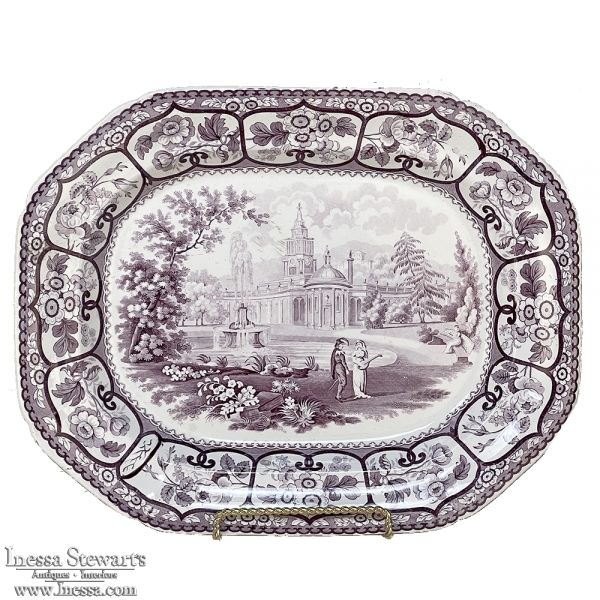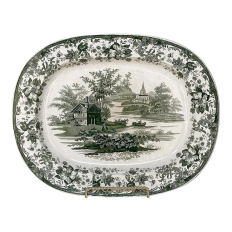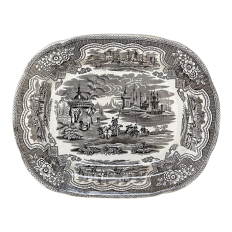19th Century Scottish Transferware Platter
2205-211333U (Click to Inquire About This Item)
1H x 17W x 13.5D
Location: Dallas
19th Century Scottish Transferware Platter in purple and white makes a wonderful serving piece as well as a decorative accent! The intricate pattern includes a complex border around the perimeter with two separate scenes depicting equestrian activities in front of an impressive castle, surrounded by borders, patterns, and flora. The center is adorned with a fantasy scene intermingling moorish architecture with more western activities, adding a bit of human interest as well. Stamped with the company name on the back, it is a pattern named Damascus.
The industry was well established in the northern regions and remains in production even today, but as is the case with many Scottish accomplishments over the centuries, is not as well known and appreciated as its more Continental counterparts. Such relative obscurity combines with the rarity which renders remaining examples from this period quite collectible.
Transferware is a style of decorated china created to sell to the emerging middle class of the Industrial Revolution in England. First produced in the late 1700s, the style caught on and has remained popular since the early 1800s. Older patterns are still being made today. Before the transferware technique was developed, porcelain china was hand painted and very expensive. The new technique made beautiful dishware affordable for the middle and working class. Transferware is made with ironstone china, developed by Miles Mason in the 1780s and patented by his son, Charles James Mason, in 1813. Made of ironstone slag, flint, Cornish stone, and clay; ironstone is heavier and thicker than porcelain and much more durable. It was made for everyday use. A hand-engraved copper plate was used to print designs on paper. The printed paper was pressed, pigment side down, on the item to be decorated. The paper was then floated off in water or burned off in the kiln. The result is a beautiful, often intricate design.
Circa 1870s
Measures 1H x 17W x 13.5D
































